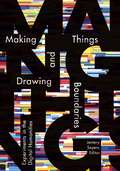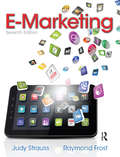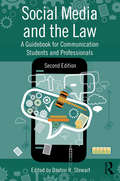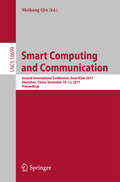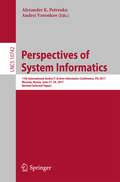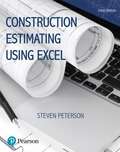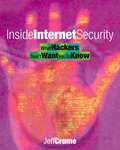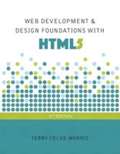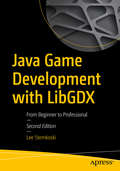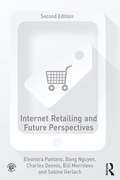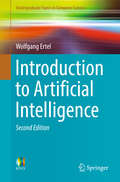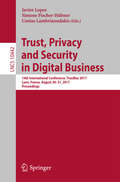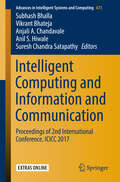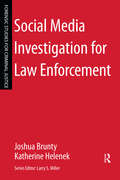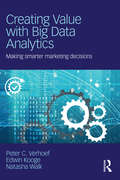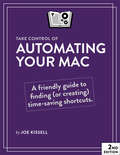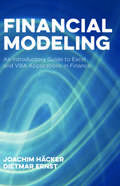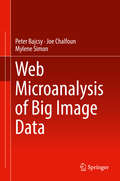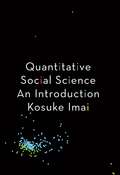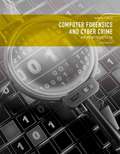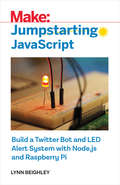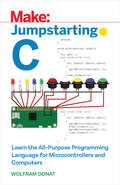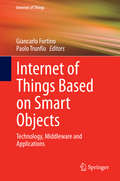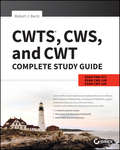- Table View
- List View
Making Things and Drawing Boundaries: Experiments in the Digital Humanities
by Jentery SayersIn Making Things and Drawing Boundaries, critical theory and cultural practice meet creativity, collaboration, and experimentation with physical materials as never before. Foregrounding the interdisciplinary character of experimental methods and hands-on research, this collection asks what it means to “make” things in the humanities. How is humanities research manifested in hand and on screen alongside the essay and monograph? And, importantly, how does experimentation with physical materials correspond with social justice and responsibility? Comprising almost forty chapters from ninety practitioners across twenty disciplines, Making Things and Drawing Boundaries speaks directly and extensively to how humanities research engages a growing interest in “maker” culture, however “making” may be defined.Contributors: Erin R. Anderson; Joanne Bernardi; Yana Boeva; Jeremy Boggs; Duncan A. Buell; Amy Burek; Trisha N. Campbell; Debbie Chachra; Beth Compton; Heidi Rae Cooley; Nora Dimmock; Devon Elliott; Bill Endres; Katherine Faull; Alexander Flamenco; Emily Alden Foster; Sarah Fox; Chelsea A. M. Gardner; Susan Garfinkel; Lee Hannigan; Sara Hendren; Ryan Hunt; John Hunter; Diane Jakacki; Janelle Jenstad; Edward Jones-Imhotep; Julie Thompson Klein; Aaron D. Knochel; J. K. Purdom Lindblad; Kim Martin; Gwynaeth McIntyre; Aurelio Meza; Shezan Muhammedi; Angel David Nieves; Marcel O’Gorman; Amy Papaelias; Matt Ratto; Isaac Record; Jennifer Reed; Gabby Resch; Jennifer Roberts-Smith; Melissa Rogers; Daniela K. Rosner; Stan Ruecker; Roxanne Shirazi; James Smithies; P. P. Sneha; Lisa M. Snyder; Kaitlyn Solberg; Dan Southwick; David Staley; Elaine Sullivan; Joseph Takeda; Ezra Teboul; William J. Turkel; Lisa Tweten.
E-marketing
by Judy Strauss Raymond D. FrostFor courses in Internet Marketing or E-marketing This book teaches marketers how to engage and listen to buyers, and how to use what they learn to improve their offerings in today’s Internet- and social media-driven marketing environment. It brings traditional marketing coverage up-to-date with a thorough, incisive look at e-marketing planning and marketing mix tactics from a strategic and tactical perspective. The focus is on the Internet and other technologies that have had a profound effect on how marketing is approached today. Included is coverage of marketing planning; legal and global environments; e-marketing strategy; and marketing mix and customer relationship management strategy and implementation issues. A major revision, this seventh edition reflects the disruption to the marketing field brought about by social media. As such it covers many new topics that represent the changes in e-marketing practice in the past two years. Because of the ever-changing landscape of the Internet, the authors suggest reading this book, studying the material, and then going online to learn more about topics of interest. Features: Better understanding of new concepts in today’s electronic marketplace is accomplished as the book puts that new terminology into traditional marketing frameworks. Readers are encouraged to exercise critical thinking and attention to their own online behavior in order to better understanding the e-marketer’s perspective, strategies, and tactics–to think like a marketer. Although the focus is on e-marketing in the United States, readers also see a global perspective in the coverage of market developments in both emerging and developed nations. An entire chapter devoted to law and ethics, and contributed by a practicing attorney, updates readers on the latest changes in this critical area. Readers are guided in learning a number of e-marketing concepts with the help of some outstanding pedagogical features:-Marketing concept grounding helps readers make the connection between tradition and today. Material in each chapter is structured around a principle of marketing framework, followed by a look at how the internet has changed the structure or practice, providing an ideal bridge from previously learned material.-Learning objectives set the pace and the goals for the material in each chapter.-Best practices from real companies tell success stories, including new examples of firms doing it right.-Graphical frameworks serve as unique e-marketing visual models illustrating how each chapter fits among others.-Chapter summaries help readers review and refresh the material covered.-Key terms are identified in bold text within the chapter to alert readers to their importance.-Review and discussion questions are another device to be used for refreshing readers’ understanding of the material in the chapter.-Web activities at the end of each chapter help readers become further involved in the content.-This revision reflects the disruption to the marketing field based on social media. A major revision from the sixth edition, it includes many new topics, as dictated by changes in e-marketing practice in the past two years.-Three important Appendices include internet adoption statistics, a thorough glossary, and book references. NEW. Students get a broader look at social media as it is now integrated throughout the book, instead of confined to one chapter. NEW. A look a new business models continues and strengthens the approach of learning from real life examples. Added and described in detail are such models as social commerce (and Facebook commerce), mobile commerce and mobile marketing, social CRM, crowsourcing, and many important be less pervasive models such as crowfunding, freemium, and flash sales. NEW.Chapters 12, 13 and 14 were completely rewritten to reflect the move from traditional marketing communication tools to the way practitioners current describe IMC online: owned, paid and earned media. NEW. Readers see examples of many new and interesting technologies that are today providing marketing opportunities
Social Media and the Law: A Guidebook for Communication Students and Professionals
by Daxton StewartSocial media platforms like Facebook, Twitter, Instagram, YouTube, and Snapchat allow users to connect with one another and share information with the click of a mouse or a tap on a touchscreen—and have become vital tools for professionals in the news and strategic communication fields. But as rapidly as these services have grown in popularity, their legal ramifications aren’t widely understood. To what extent do communicators put themselves at risk for defamation and privacy lawsuits when they use these tools, and what rights do communicators have when other users talk about them on social networks? How can an entity maintain control of intellectual property issues—such as posting copyrighted videos and photographs—consistent with the developing law in this area? How and when can journalists and publicists use these tools to do their jobs without endangering their employers or clients? Including two new chapters that examine First Amendment issues and ownership of social media accounts and content,?Social Media and the Law brings together thirteen media law scholars to address these questions and more, including current issues like copyright, online impersonation, anonymity, cyberbullying, sexting, and live streaming. Students and professional communicators alike need to be aware of laws relating to defamation, privacy, intellectual property, and government regulation—and this guidebook is here to help them navigate the tricky legal terrain of social media.
Smart Computing and Communication
by Meikang QiuThis book constitutes the proceedings of the First International Conference on Smart Computing and Communication, SmartCom 2016, held in Shenzhen, China, in December 2016. The 59 papers presented in this volume were carefully reviewed and selected from 210 submissions. The conference focuses on both smart computing and communications fields and aims to collect recent academic work to improve the research and practical applications.
Perspectives of System Informatics
by Alexander K. Petrenko Andrei VoronkovThis book constitutes the thoroughly refereed post-conference proceedings of the 6th International Andrei Ershov Memorial Conference, PSI 2006, held in Akademgorodok, Novosibirsk, Russia in June 2006. The 30 revised full papers and 10 revised short papers presented together with 5 invited papers address all current aspects of theoretical computer science, programming methodology, and new information technologies.
Construction Estimating Using Excel (Third Edition)
by Steven PetersonConstruction Estimating with Excel, 3/e, introduces readers to the fundamental principles of estimating using drawing sets, real-world exercises, and examples. The book moves step-by-step through the estimating process, discussing the art of estimating, the quantity takeoff, how to put costs to the estimate, and how to finalize the bid. As students progress through the text they are shown how Microsoft Excel can be used to improve the estimating process. Because it introduces spreadsheets as a way of increasing estimating productivity and accuracy, the book can help both beginning and experienced estimators improve their skills. <p><p> The Third Edition gives students a broader understanding of construction estimating with a new chapter discussing the role that estimating plays in different project delivery methods and in the design process and how to use data from RSMeans. To bring the book up to date, the material and equipment costs and labor rates have been updated to reflect current costs, and the discussion of Excel (including the figures) is based on Excel 2016. Additionally, content throughout the book has been updated to align to ACCE and ABET student learning outcomes
Inside Internet Security: What Hackers Don't Want You To Know
by Jeff CrumeThis book describes the underlying principles that crop up again and again in hacker attacks, and then focusses on lessons that can be learned, and on how to protect against recurrence. It is a practical reference book for anyone designing or administering a corporate or eBusiness network which runs across a number of platforms via the Internet. It aims to arm systems administrators with a thorough understanding of the problems of network security and their solutions, and thus help realize the tremendous potential of eBusiness. *practical hands-on advice on securing network systems *security checklists for each scenario *detailed pointers to other detailed information sources *in-depth theoretical background information *Multi-platform coverage *Unique external source of info on IBM systems *Wide use of diagrams and illustrations
Web Development And Design Foundations With HTML5 (Eighth Edition)
by Terry Felke-MorrisUpdated and expanded in this Eighth Edition, Web Development and Design Foundations with HTML5 presents a comprehensive introduction to the development of effective web sites. Intended for beginning web developers, the text relates both the necessary hard skills (such as HTML5, CSS, and JavaScript) and soft skills (design, e-commerce, and promotion strategies) considered fundamental to contemporary web development. An emphasis on hands-on practice guides readers, as the text introduces topics ranging from configuration and layout to accessibility techniques and ethical considerations. The Eighth Edition contains updated coverage of HTML5 and CSS, expanded coverage of designing for mobile devices, and more.
Java Game Development with LibGDX
by Lee StemkoskiDesign and create video games using Java, with the LibGDX software library. By reading Beginning Java Game Development with LibGDX, you will learn how to design video game programs and how to build them in Java. You will be able to create your own 2D games, using various hardware for input (keyboard/mouse, gamepad controllers, or touchscreen), and create executable versions of your games. The LibGDX library facilitates the game development process by providing pre-built functionality for common tasks. It is a free, open source library that includes full cross-platform compatibility, so programs written using this library can be compiled to run on desktop computers (Windows/MacOS), web browsers, and smartphones/tablets (both Android and iOS). Beginning Java Game Development with LibGDX teaches by example with many game case study projects that you will build throughout the book. This ensures that you will see all of the APIs that are encountered in the book in action and learn to incorporate them into your own projects. The book also focuses on teaching core Java programming concepts and applying them to game development. What You Will Learn How to use the LibGDX framework to create a host of 2D arcade game case studies How to compile your game to run on multiple platforms, such as iOS, Android, Windows, and MacOS How to incorporate different control schemes, such as touchscreen, gamepad, and keyboard Who This Book Is For Readers should have an introductory level knowledge of basic Java programming. In particular, you should be familiar with: variables, conditional statements, loops, and be able to write methods and classes to accomplish simple tasks. This background is equivalent to having taken a first-semester college course in Java programming.
Internet Retailing and Future Perspectives
by Eleonora Pantano Bang Nguyen Charles Dennis Sabine GerlachSince the first edition of this landmark textbook, online shopping has grown exponentially to the point that it now threatens to eclipse the high street. With online retail offering both advantages and challenges that are distinct from traditional commerce, this textbook provides new approaches to retailing and as such helps readers to take advantage of new digital technologies. This long-awaited new edition provides a thorough and substantial update to its solid core principle of digital retailing and its relationship with conventional retail methods. These principles are explained clearly and practically to provide students, entrepreneurs and researchers with a reliable guide to the implementation and operation of a successful online retailing business. Updates to this edition include: Search engine marketing and search engine optimization. New and updated case studies, including Tesco’s virtual store, Ray-Ban’s smart mirror, IKEA’s mobile catalogue and Nordstrom’s TextStyle. Social networks and electronic word-of-mouth communication. A new chapter on ubiquitous retailing. A brand new companion website to support tutors. With accessibly written features such as key learning points, questions, think points and further reading, Internet Retailing and Future Perspectives is ideal for anyone using, studying or researching digital commerce.
Introduction to Artificial Intelligence
by Wolfgang ErtelThis accessible and engaging textbook presents a concise introduction to the exciting field of artificial intelligence (AI). The broad-ranging discussion covers the key subdisciplines within the field, describing practical algorithms and concrete applications in the areas of agents, logic, search, reasoning under uncertainty, machine learning, neural networks, and reinforcement learning. Fully revised and updated, this much-anticipated second edition also includes new material on deep learning. Topics and features: presents an application-focused and hands-on approach to learning, with supplementary teaching resources provided at an associated website; contains numerous study exercises and solutions, highlighted examples, definitions, theorems, and illustrative cartoons; includes chapters on predicate logic, PROLOG, heuristic search, probabilistic reasoning, machine learning and data mining, neural networks and reinforcement learning; reports on developments in deep learning, including applications of neural networks to generate creative content such as text, music and art (NEW); examines performance evaluation of clustering algorithms, and presents two practical examples explaining Bayes' theorem and its relevance in everyday life (NEW); discusses search algorithms, analyzing the cycle check, explaining route planning for car navigation systems, and introducing Monte Carlo Tree Search (NEW); includes a section in the introduction on AI and society, discussing the implications of AI on topics such as employment and transportation (NEW). Ideal for foundation courses or modules on AI, this easy-to-read textbook offers an excellent overview of the field for students of computer science and other technical disciplines, requiring no more than a high-school level of knowledge of mathematics to understand the material.
Trust, Privacy and Security in Digital Business
by Costas Lambrinoudakis Javier Lopez Simone Fischer-HübnerThis book presents the proceedings of the 6th International Conference on Trust, Privacy and Security in Digital Business (TrustBus 2009), held in Linz, Austria d- ing September 3-4, 2009. The conference continues from previous events held in Zaragoza (2004), Copenhagen (2005), Krakow (2006), Regensburg (2007) and Turin (2008). The advances in the information and communication technologies (ICT) have raised new opportunities for the implementation of novel applications and the pro- sion of high-quality services over global networks. The aim is to utilize this 'infor- tion society era' for improving the quality of life for all citizens, disseminating knowledge, strengthening social cohesion, generating earnings and finally ensuring that organizations and public bodies remain competitive in the global electronic m- ketplace. Unfortunately, such a rapid technological evolution cannot be problem free. Concerns are raised regarding the 'lack of trust' in electronic procedures and the - tent to which 'information security' and 'user privacy' can be ensured. TrustBus 2009 brought together academic researchers and industry developers, who discussed the state of the art in technology for establishing trust, privacy and security in digital business. We thank the attendees for coming to Linz to participate and debate the new emerging advances in this area.
Intelligent Computing and Information and Communication
by Subhash Bhalla Vikrant Bhateja Anjali A. Chandavale Anil S. Hiwale Suresh Chandra SatapathyThe volume presents high quality research papers presented at Second International Conference on Information and Communication Technology for Intelligent Systems (ICICC 2017). The conference was held during 2-4 August 2017, Pune, India and organized communally by Dr. Vishwanath Karad MIT World Peace University, Pune, India at MIT College of Engineering, Pune and supported by All India Council for Technical Education (AICTE) and Council of Scientific and Industrial Research (CSIR). The volume contains research papers focused on ICT for intelligent computation, communications and audio, and video data processing.
Social Media Investigation for Law Enforcement
by Joshua Brunty Katherine HelenekSocial media is becoming an increasingly important—and controversial—investigative source for law enforcement. Social Media Investigation for Law Enforcement provides an overview of the current state of digital forensic investigation of Facebook and other social media networks and the state of the law, touches on hacktivism, and discusses the implications for privacy and other controversial areas. The authors also point to future trends.
Creating Value with Big Data Analytics: Making Smarter Marketing Decisions
by Peter C. Verhoef Edwin Kooge Natasha WalkOur newly digital world is generating an almost unimaginable amount of data about all of us. Such a vast amount of data is useless without plans and strategies that are designed to cope with its size and complexity, and which enable organisations to leverage the information to create value. This book is a refreshingly practical, yet theoretically sound roadmap to leveraging big data and analytics. Creating Value with Big Data Analytics provides a nuanced view of big data development, arguing that big data in itself is not a revolution but an evolution of the increasing availability of data that has been observed in recent times. Building on the authors’ extensive academic and practical knowledge, this book aims to provide managers and analysts with strategic directions and practical analytical solutions on how to create value from existing and new big data. By tying data and analytics to specific goals and processes for implementation, this is a much-needed book that will be essential reading for students and specialists of data analytics, marketing research, and customer relationship management.
Take Control of Automating Your Mac
by Joe KissellWork faster, increase your efficiency, and have more fun with automation!Looking for ways to work smarter and faster with your Mac? In this updated and expanded edition of his popular guide to Mac automation, Joe Kissell shows how anyone, at any level of experience, can save time and effort, and avoid unnecessary errors, by using automation techniques that range from the simplest keyboard shortcut to the most complicated script.In this book, Joe teaches you how to automate routine tasks in a wide variety of ways. You can begin by making the most of productivity features such as Siri, Spotlight (for launching apps), and text replacement--and then move on to the more sophisticated automation tools built into macOS, such as Automator, AppleScript, services, and shell scripts.In addition, Joe gives extensive information about third-party automation apps that can make a huge difference to your work efficiency, such as Keyboard Maestro, TextExpander, OmniGraffle, and many more. As an extra bonus, the book includes coupons for discounts on 11 automation apps, adding up to more than $100 in savings!Whether you're new to automation, you just need a refresher, or you're experienced with automation but want to go deeper, this book can teach you the skills you need to automate with ease. Take back your time, work more efficiently, and have more fun with your Mac, with Take Control of Automating Your Mac, Second Edition!With this book, you'll learn how to:Get started with the built-in macOS automation tools, including Automator, AppleScript, and the command lineTake full advantage of input devices to save clicksAutomate text expansion for faster, more consistent typingControl the Finder with a launcher and by organizing files with HazelSupercharge your clipboard to remember and reformat previous copiesWrite macros in Microsoft Office and Nisus Writer ProCreate rules to file email automatically in Apple Mail and OutlookLog in to Web sites faster with a password managerAutomate cloud services with IFTTT and ZapierSet up automatic backup and syncingUse Omni Automation for JavaScript-based automation tasksControl nearly anything on your Mac with Keyboard MaestroBONUS: We've included discounts totalling over $100 on 11 of the key apps Joe covers: 10% to 30% off on Keyboard Maestro, LaunchBar, Hazel, Nisus Writer Pro, OmniGraffle, Script Debugger, TextExpander, TextSoap, TypeIt4Me, Typinator, and UI Browser--look for coupons at the end of the book!
Financial Modeling
by Joachim Häcker Dietmar ErnstNachvollziehbare Modelle zur Beurteilung komplexer Finanzprodukte. Die Autoren bieten Studenten einen anwendungsorientierten Leitfaden zu den zentralen Themenkomplexen Corporate Finance, Derivate und Portfoliomanagement. Zwei Workshops zu Microsoft Excel(r) und der Programmiersprache VBA(r) komplettieren das finanzwirtschaftliche Know-how. Der Kurscharakter des Buches und die praxisnahen Beispiele, die zusatzlich als Download-Angebot zur Verfugung stehen, ermoglichen ein schnelles und interaktives Lernen. Als Nachschlagewerk leistet der Band auch Praktikern wertvolle Dienste. "
Web Microanalysis of Big Image Data
by Peter Bajcsy Joe Chalfoun Mylene SimonThis book looks at the increasing interest in running microscopy processing algorithms on big image data by presenting the theoretical and architectural underpinnings of a web image processing pipeline (WIPP). Software-based methods and infrastructure components for processing big data microscopy experiments are presented to demonstrate how information processing of repetitive, laborious and tedious analysis can be automated with a user-friendly system. Interactions of web system components and their impact on computational scalability, provenance information gathering, interactive display, and computing are explained in a top-down presentation of technical details. Web Microanalysis of Big Image Data includes descriptions of WIPP functionalities, use cases, and components of the web software system (web server and client architecture, algorithms, and hardware-software dependencies). The book comes with test image collections and a web software system to increase the reader's understanding and to provide practical tools for conducting big image experiments. By providing educational materials and software tools at the intersection of microscopy image analyses and computational science, graduate students, postdoctoral students, and scientists will benefit from the practical experiences, as well as theoretical insights. Furthermore, the book provides software and test data, empowering students and scientists with tools to make discoveries with higher statistical significance. Once they become familiar with the web image processing components, they can extend and re-purpose the existing software to new types of analyses. Each chapter follows a top-down presentation, starting with a short introduction and a classification of related methods. Next, a description of the specific method used in accompanying software is presented. For several topics, examples of how the specific method is applied to a dataset (parameters, RAM requirements, CPU efficiency) are shown. Some tips are provided as practical suggestions to improve accuracy or computational performance.
Quantitative Social Science: An Introduction
by Kosuke ImaiAn introductory textbook on data analysis and statistics written especially for students in the social sciences and allied fields Quantitative analysis is an increasingly essential skill for social science research, yet students in the social sciences and related areas typically receive little training in it--or if they do, they usually end up in statistics classes that offer few insights into their field. This textbook is a practical introduction to data analysis and statistics written especially for undergraduates and beginning graduate students in the social sciences and allied fields, such as economics, sociology, public policy, and data science. Quantitative Social Science engages directly with empirical analysis, showing students how to analyze data using the R programming language and to interpret the results--it encourages hands-on learning, not paper-and-pencil statistics. More than forty data sets taken directly from leading quantitative social science research illustrate how data analysis can be used to answer important questions about society and human behavior. Proven in the classroom, this one-of-a-kind textbook features numerous additional data analysis exercises and interactive R programming exercises, and also comes with supplementary teaching materials for instructors. Written especially for students in the social sciences and allied fields, including economics, sociology, public policy, and data science Provides hands-on instruction using R programming, not paper-and-pencil statistics Includes more than forty data sets from actual research for students to test their skills on Covers data analysis concepts such as causality, measurement, and prediction, as well as probability and statistical tools Features a wealth of supplementary exercises, including additional data analysis exercises and interactive programming exercises Offers a solid foundation for further study Comes with additional course materials online, including notes, sample code, exercises and problem sets with solutions, and lecture slides
Computer Forensics and Cyber Crime: an Introduction (Third Edition
by Marjie T. BritzThe leading introduction to computer crime and forensicsis now fully updated to reflect today's newest attacks, laws, and investigatory best practices. Packed with new case studies, examples, and statistics, Computer Forensics and Cyber Crime, Third Edition adds up-to-the-minute coverage of smartphones, cloud computing, GPS, Mac OS X, Linux, Stuxnet, cyberbullying, cyberterrorism, search and seizure, online gambling, and much more. Covers all forms of modern and traditional computer crime, defines all relevant terms, and explains all technical and legal concepts in plain English, so students can succeed even if they have no technical, legal, or investigatory background.
Making Your Primary School E-safe: Whole School Cyberbullying and E-safety Strategies for Meeting Ofsted Requirements
by Adrienne KatzChildren are using the internet and mobile devices at increasingly younger ages, and it's becoming more and more important to address e-safety in primary schools. This practical book provides guidance on how to teach and promote e-safety and tackle cyberbullying with real-life examples from schools of what works and what schools need to do. The book explains how to set policy and procedures, how to train staff and involve parents, and provides practical strategies and ready-to-use activities for teaching e-safety and meeting Ofsted requirements. Including up-to-the-minute information and advice that includes new technologies, social media sites, and recent school policy trends such as 'Bring Your Own Device', this book provides all of the information that educational professionals need to implement successful whole school e-safety strategies.
Jumpstarting Javascript
by Lynn BeighleyAll Make Jumpstart books provide a quick way for readers to "jumpstart" their knowledge of a certain topic.In 50 intense pages, Jumpstarting JavaScript shows makers how to install the Node.js environment on a Raspberry Pi, how to use Node.js to turn their Raspberry Pi into a self-contained web server, and how to get that web server to send a tweet.
Jumpstarting C
by Wolfram DonatAll Make Jumpstart books provide a quick way for makers to "jumpstart" their knowledge of a certain topic.Jumpstarting C takes the reader on a 50-page journey, from installing C on a Raspberry Pi, to creating their first "Hello World" program in C, to building and programming a handheld 4-color memory game using C, pushbuttons and LEDs.
Internet of Things Based on Smart Objects
by Giancarlo Fortino Paolo TrunfioThe Internet of Things (IoT) usually refers to a world-wide network of interconnected heterogeneous objects (sensors, actuators, smart devices, smart objects, RFID, embedded computers, etc) uniquely addressable, based on standard communication protocols. Beyond such a definition, it is emerging a new definition of IoT seen as a loosely coupled, decentralized system of cooperating smart objects (SOs). A SO is an autonomous, physical digital object augmented with sensing/actuating, processing, storing, and networking capabilities. SOs are able to sense/actuate, store, and interpret information created within themselves and around the neighbouring external world where they are situated, act on their own, cooperate with each other, and exchange information with other kinds of electronic devices and human users. However, such SO-oriented IoT raises many in-the-small and in-the-large issues involving SO programming, IoT system architecture/middleware and methods/methodologies for the development of SO-based applications. This Book will specifically focus on exploring recent advances in architectures, algorithms, and applications for an Internet of Things based on Smart Objects. Topics appropriate for this Book include, but are not necessarily limited to: - Methods for SO development - IoT Networking - Middleware for SOs - Data Management for SOs - Service-oriented SOs - Agent-oriented SOs - Applications of SOs in Smart Environments: Smart Cities, Smart Health, Smart Buildings, etc. Advanced IoT Projects.
CWTS, CWS, and CWT Complete Study Guide: Exams PW0-071, CWS-2017, CWT-2017
by Robert J. BartzThe must-have guide to the CWTS exam, updated for 2017 CWTS Certified Wireless Technology Specialist Study Guide is your number-one resource for comprehensive exam preparation. Updated to study in 2017 and beyond, this book takes a multi-modal approach to ensure your complete confidence and ability for the big day: full coverage of all CWTS exam objectives reinforces your conceptual knowledge, hands-on exercises help hone your practical skills, and the Sybex online learning environment provides flashcards, a glossary, and review questions to help you test your understanding along the way. An objective map and pre-assessment test allow for more efficient preparation by showing you what you already know and what you need to review—and the companion website's complete practice exams give you a "dry run" so you can pinpoint weak areas while there's still time to improve. If you're serious about earning your CWTS certification, this book is your ideal companion for complete and thorough preparation. Learn critical concepts and apply essential skills in areas like hardware and software, radio frequency fundamentals, surveying and installation, support, troubleshooting, security, and more. This guide gives you everything you need to approach the exam with confidence. Master 100 percent of the CWTS exam objectives Use effective planning tools to get the most out of your study time Practice your skills with hands-on exercises and real-world scenarios Access online study aids that let you review any time, any place The CWTS certification gets your foot in the door of a growing industry, and is a stepping stone to the industry standard CWNP certification. The exam will test your abilities in all fundamental areas of Wi-Fi technology, so it's important that your study plan be complete and up-to-date. CWTS Certified Wireless Technology Specialist Study Guide is your ideal solution for comprehensive preparation.
